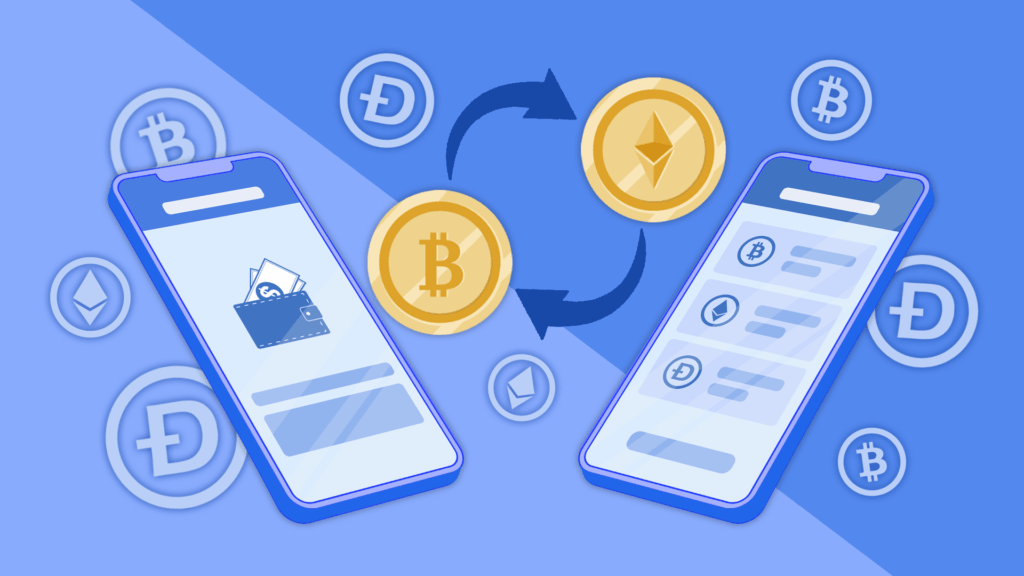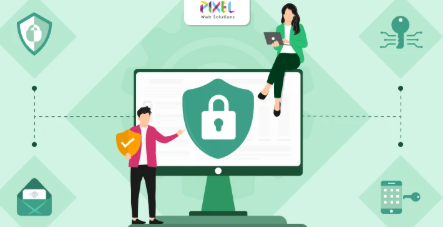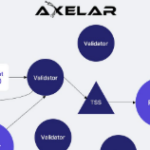This piece will examine how to maintain security in the integration of cryptocurrency exchanges, an essential component of any digital asset platform.
With the increasing use of cryptocurrency, it is important to safeguard user information, and protect their funds and transactions.
I will analyze the best security practices, compliance… and advanced features for the creation of an integrated system for exchanges that will be secure, dependable, and fully compliant.
What is Cryptocurrency Exchange Integration?
Integrating cryptocurrency exchanges involves connecting digital platforms—including crypto wallets, payment gateways, trading apps, and financial services—to one or more exchanges via APIs (Application Programming Interfaces).
This allows users to trade, track balances, and perform crypto transactions (deposits and withdrawals) across different exchanges, and obtain real-time price information.

Automated exchange integration gives clients access to higher liquidity, quicker transaction processing, and more favorable exchange rates all without manual intervention with different exchanges. Because of the integration of advanced user functionalities, user privacy, and data regulation, risk management becomes critical.
Effective integration involves sustained risk management to prevent data breaches, unauthorized access, and abuse of processing resources via exploitation of unsecured API access. Overall, exchange integration automates management of digital assets, which forms the basis of all crypto services.
How to Ensure Security in Cryptocurrency Exchange Integration
Example: Securing Integration Between a Crypto Wallet and Binance Exchange
Step 1: Use Secure API Authentication
Start with restricted permission API keys from Binance. Use OAuth 2.0 or HMAC (Hash-Based Message Authentication Code) for safe API communication. API keys should never be hardcoded. Instead, use encrypted environment variables and secret managers.

Step 2: Implement Data Encryption
All data flowing between your wallet application and the exchange must be encrypted with SSL/TLS protocols. Apply strong encryption, like AES-256 to your data vaults, especially for critical information, private keys, and user credentials.
Step 3: Enable Two-Factor Authentication (2FA)
Place 2FA on every administrative and user access point. Providing an additional security step along with the primary credentials (like Google Authenticator or an SMS code).
Step 4: Schedule Regular Security Audits
Every so often, perform security audits and penetration testing to locate the weaknesses within your integration setup. Security firms can assess your code, APIs, and servers for security weaknesses.
Step 5: Use Rate Limiting and Access Controls
Make sure to take advantage of rate limiting so people can’t abuse your API endpoints and also use role-based access control (RBAC) to make sure that only the right people can access the settings of the integration and perform certain actions.
Step 6: Real-Time Monitor Transactions
All systems should include real-time monitoring and alerting tools so you can spot odd activity such as lots of failed login attempts or transactions above set thresholds. Large security events can be prevented with early detection.
Step 7: Use Cold Wallets for Fund Storage
To minimize the risk of hacking, the bulk of user assets should be stored in cold (offline) wallets and not kept online. In the event that the integration layer is compromised, it still helps secure the assets.
Step 8: Regulatory Compliance
Confirm user identity and track suspicious activity using KYC (Know Your Customer) and AML (Anti-Money Laundering) frameworks. Legal safeguards come from working with licensed exchanges within your jurisdiction.—
Step 9: Establish Backup and Recovery Solutions
Backup critical integrated systems. Establish disaster recovery protocols. In the event of a security incident, your team must deploy protocols to fast track systems recovery to avoid permanent data loss.
Major Security Challenges in Exchange Integration
API Vulnerabilities
- APIs ensure proper data exchange are vital to integration but can be abused if APIs are not secured.
- API calls to authentication services not adequately secured criticize authentication as well as unencrypted API calls can lead to data leakage and unauthorized access.
Data Breaches
- Absence of proper data encryption as well as poor control over access to private keys, user credentials and transaction logged histories signed transaction can be used against the organization.
- Storing data without encryption opens the door for data exposure and subsequently breaches.
Phishing and Social Engineering Attacks
- Hu and his swarm of attackers trick the exchange users and admins into giving away login and API keys, so disabling your Phishers your Suckers are gunning straight for your data.
- Malicious exchange replicas and fraudulent links are some of the ways he gets your data. they are attackers material.
Smart Contract Exploits
- Having unregulated integration contracts which control/fund smart contracts are able to be abused. funds lost forever. Bugs-Loss.
- Logic deficiencies and the absence of audits lead to utter chaos.
DDoS (Distributed Denial of Service) Attacks
- Extreme Phishing attacks Over the net they have their little slave services put out a disabling their C4 of APIs or Servers as the exchange freezes.
- No-Only S. No-Rat. No packet filter=-bigger flash overload.
Best Practices to Ensure Security
Use Secure and Encrypted APIs
- Implement SSL/TLS encryption for all API communications.
- Use OAuth 2.0 or HMAC authentication to verify requests securely.
- Rotate API keys regularly and avoid storing them in code or logs.
Conduct Regular Security Audits
- Perform vulnerability assessments and penetration testing frequently.
- Hire third-party cybersecurity experts to audit integration systems.
- Patch software and update libraries immediately when vulnerabilities are discovered.
Implement Multi-Factor Authentication (MFA)
- Add 2FA or MFA for both user accounts and admin access.
- Use authenticator apps or hardware security keys for enhanced protection.
Store Funds in Cold Wallets
- Keep most assets in offline cold storage to minimize hacking risks.
- Use multi-signature wallets for transactions to ensure multiple approvals.
Apply Role-Based Access Control (RBAC)
- Limit access to critical systems based on user roles.
- Give employees only the permissions necessary for their tasks.
Monitor Transactions and Logs in Real Time
- Identify and respond to abnormal behaviors with real-time monitoring and alert systems.
- Automate alerts for suspicious withdrawals, API abuse, and failed logins.
Compliance and Legal Considerations
Adherence to KYC (Know Your Customer) Regulations
- Verify users’ KYC documentation prior to enabling accounts for trading or withdrawals.
- Helps to minimize fraud, money laundering, and account misuse.
- Automated KYC solutions help to streamline and accelerate the verification process.
Compliance with AML (Anti-Money Laundering) Laws
- Proactively look for suspicious transactions and report them to the relevant authorities.
- Establish transaction limits and integrate monitoring systems and audit trails.
- Establish partnerships with exchanges that have a strong reputation for compliance with AML policies.
Data Privacy and GDPR Compliance
- Data privacy and the protection of user data is key to compliance with the GDPR and/or relevant regional data protection regulations.
- Capture and process personal data only after gaining explicit consent.
- Honor users’ requests to access, edit or erase their personal data.
Working with Licensed and Regulated Exchanges
- Integration should only be with exchanges that have valid regulatory approvals.
- Licensed exchanges maintain a high level of compliance so the legal exposure is minimized.
- This builds trust with the clients and enhances the credibility of the exchange.
Secure Data Storage and Handling
- Use encryption and secure servers to store personal and financial data.
- Apply role-based permissions to limit access to sensitive data.
- Continuously check for data leakage and unauthorized access.
Advanced Security Measures
Smart Contract Auditing
- Carry out independent smart contract audits prior to deployment.
- Find vulnerabilities, logical flaws, and exploits and remediate them.
- Turn to reputable auditors or automated solutions like CertiK or OpenZeppelin.
Multi-Signature Wallet Implementation
- Have multiple approvals (signatures) to authenticate any transaction.
- Eliminates single points of failure which ensures unauthorized fund transfers won’t slip through the cracks.
- Increases control and visibility on high-value transactions.
Hardware Security Modules (HSMs)
- Secure and manage cryptographic keys with secure hardware devices.
- Keeps private keys safe from software environment exposure.
- Essential for institutional-grade exchanges and custodians.
Real-Time Threat Detection Systems
- Use AI-driven threat monitoring tools to identify outlying behaviors.
- Automatically capture suspicious logins, withdrawals, or API calls.
- Increase the response speed during an ongoing cyberattack.
Blockchain Analytics and Monitoring Tools
- Apply analytics to account monitoring and identify and track risky wallets.
- Help in expelling fraud, laundering, or theft of crypto and identifying laundering.
- Examples are Chainalysis, CipherTrace, and Elliptic.
Zero-Knowledge Proofs (ZKPs)
- ZKPs allow verification of transactions or identities without sensitive information being disclosed.
- Increases privacy and security in decentralized integrations.
- Appropriate for systems that value and protect privacy and are concerned about compliance.
Risk Management Strategies
Conduct Comprehensive Risk Assessments
- Identify the possible threats, be it hacking, insider threats, or a potential data leak.
- Determine the risk’ impact and likelihood for each prior to the integration.
- For organized risk assessment, adopt analysis such as ISO 27001.
Have a Strong Incident Response Plan
- For each possible cyberattack or data breach, draw a clear attack or data breach response.
- Pre-assign the roles and create a communication plan.
- Regularly schedule readiness drills.
Have Regular Data Backups and Set Recovery Plans
- Have critically important data and system configuration files kept as encrypted backups.
- Backup files stored can be in safeguarded and remote environments or clouds.
- Recoveries for data backups should periodically be checked to assist in proving recovery capabilities.
Ensure Continuous System Monitoring
- Set to utilize automated monitoring systems to identify odd unreported systems.
- Check APIs, transaction records, and user log records for possible unregistered access.
- Probable system damages can be prevented with instant detection.
Duty Segregation
- Major system interdependences should be split up to at least 3 people in the team.
- Reduces the risk of internal fraud or mismanagement.
Future of Security in Exchange Integration
The future of integrated security within cryptocurrency exchanges is leaning towards automation, advanced decentralization, and adaptive intelligent systems.
As exchanges and platforms digital asset trading gains mainstream traction, cyber threat prediction and prevention technologies leveraging ML and AI powering real-time adaptive systems become part of the exchanges and cyber platforms regulatory controls.
Privacy-preserving regulatory compliance user verification is provided by the combination of Zero-Knowledge Proofs and Decentralized Identity systems. Quantum resistant cryptographic systems will protect the integrated systems of encryption and decryption of advanced control systems utilizing AI.
Automated, compliant, and auditable systems adopting and documenting regulatory frameworks arriving for global exchanges will become the global norm. Automated systems responding to continuous monitoring and threat containment will be the norm for initiated protocols that breach cyber controls.
Adapt and self-healing infrastructures for cross and intra border trades will become adaptive and self-healing for asset and data exchanges that lose trust, maintain, and protect adaptive infrastructures.
Conclusion
To conclude, integrating and safeguarding the security of a cryptocurrency exchange requires continuous dedication and focus, as early security implementations establish a baseline for integration future risks.
The evolving risk scenario posed as digital assets becomes more widely adopted requires innovative security mechanisms. Automating risk management processes and monitoring user behaviors with AI for compliance will remove the friction for staying compliant and allowing your customers to continuously trust your business.
Security compliance in crypto exchange integration will always require a ‘hands-on’ approach with the collaboration of innovative security mechanisms and risk management processes.
A ‘best of breed’ holistic approach to security compliance will always retain trust and allow a seamless integration into the most challenging ecosystems.
FAQ
Why is security important in cryptocurrency exchange integration?
Security is crucial because integrations handle sensitive data such as private keys, API credentials, and user funds. Without strong protection, hackers can exploit vulnerabilities, leading to data breaches or financial losses.
What are the main security risks in exchange integration?
Common risks include API vulnerabilities, data breaches, phishing attacks, insider threats, and smart contract exploits. These issues can compromise both system integrity and user assets if not properly managed.
How can I protect API connections during integration?
Use SSL/TLS encryption, OAuth 2.0, or HMAC authentication to secure API communications. Avoid storing keys in plain text and rotate them regularly to minimize exposure.
What compliance measures should I follow?
Ensure your platform adheres to KYC (Know Your Customer), AML (Anti-Money Laundering), and GDPR data protection regulations. Partnering with licensed exchanges also strengthens legal and security compliance.









